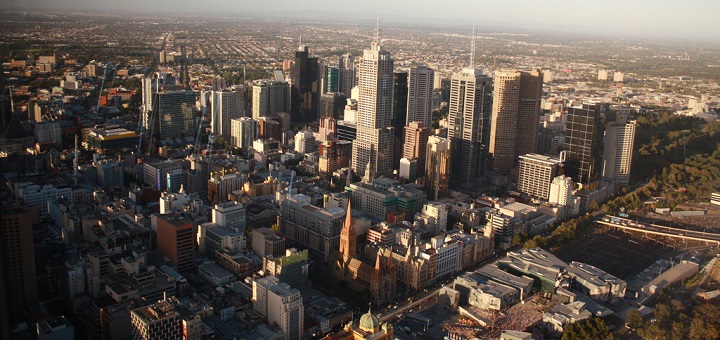The rivalry between Australia’s two largest cities has been going on for a long time. At .id we don’t seek to say which one is “better”, but just which one is bigger!
The latest population data from ABS shed some light on this question, which we first asked in this article from 2011.
According to the latest ABS figures, published in Regional Population Growth at the end of March, the population of Greater Melbourne at June 30th, 2015, was 4,529,496. This was still below Greater Sydney, which is nudging 5 million, at 4,920,970. By these figures, Melbourne is about 391,000 people smaller than Sydney, or about 8% smaller. Combined, they comprise 9,450,466 people, or just under 40% of Australia’s population.
These are the “Greater Capital City” areas which are generally used to represent the state capitals in Australia. They tend to be defined to go out a bit further from the city than many people would think, and include some clearly separate towns. For instance Greater Sydney includes the entire Central Coast and Blue Mountains. While Greater Melbourne stretches out to include the entire Mornington Peninsula, Pakenham, Warburton, Kinglake and Gisborne.
Slightly confusingly, the ABS also publishes another, slightly smaller definition of Melbourne and Sydney (and other centres) in their “Significant Urban Areas” list. By this definition, Sydney is 4,526,479 and Melbourne is 4,353,514. This includes just the “built up” area which is contiguously urban and excludes places like the NSW Central Coast, Melton and Sunbury in Victoria.
We will continue to use the Greater Capital City definitions.
In the last 10 years, Melbourne has added 832,124 people, while Sydney has added 703,407 people. Both cities had a growth rate above the national average in 2014-15, but Melbourne’s was 2.1% and Sydney’s 1.7%.
In just the last year, Melbourne added 91,593 people, while Sydney added 83,309. Victoria is the fastest growing state (for the first time since 1942, and only the second time since 1888!).
If this trend were to continue, Melbourne would “make up” the difference of 391,000 people between Melbourne and Sydney, in 47 years time. This puts it in the year 2062.
If we use instead the average difference in growth over the past 10 years, Melbourne would overtake Sydney in just 30 years, in the year 2046. The difference between these two methods is due to the fact that Sydney’s growth rate has actually picked up considerably over the past 3 years, as a building boom takes hold.
So if that trend continues, Sydney may power ahead and grow faster than Melbourne. Nevertheless, both cities will be much larger by the time Melbourne equals Sydney’s population, if it ever does.
If this happens in 2046, based on current growth rates, both cities would have a population around 7.3 million.
.id is a team of population experts, who use a unique combination of online tools and consulting to help organisations decide where and when to locate their facilities and services, to meet the needs of changing populations. Access our free demographic resources here.
Which age groups are growing fastest in Australia, read our ebook: Three growth markets in Australia









